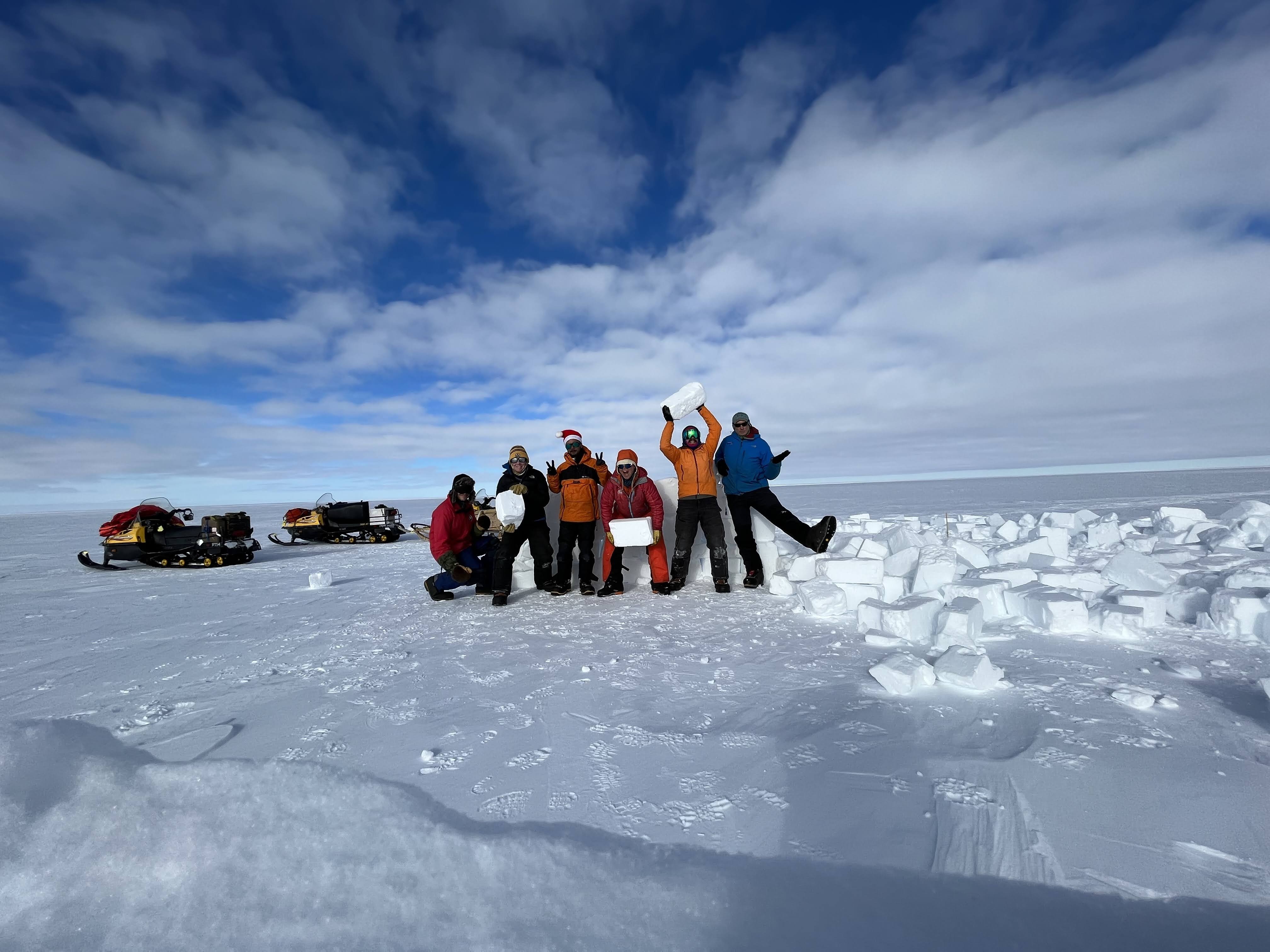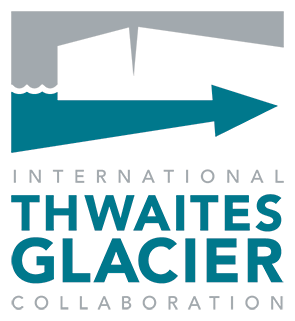TIME field teams retrieve seismic, GPS, and radar data from Thwaites' eastern shear margin
There was a whole lot of digging during this Antarctic summer season (2021-22) at the Eastern Shear Margin (ESM) of Thwaites Glacier by ten intrepid International Thwaites Glacier Collaboration (ITGC) scientists and mountaineers. Two Thwaites Interdisciplinary Margin Evolution (TIME) field teams - one deployed through the British Antarctic Survey (BAS) and one deployed through the U.S. Antarctic Program (USAP) - successfully retrieved data and instruments from 14 seismic stations, 12 GPS stations, and 4 autonomous phase-sensitive radar systems deployed during 2019-20 at the Eastern Shear Margin of Thwaites Glacier. The newly recovered data will help the team better understand the current environment and future evolution of Thwaites’ ESM. The two teams worked from two small camps known as the TIME2 and TIME1 camps, separated by ~140 km of beautiful and inhospitable West Antarctic flat white wilderness.
The TIME BAS Team included Emma Smith (Leeds research fellow), Ronan Agnew (Leeds Ph.D. student), and BAS field guides Julie Baum and Taff Raymond. The TIME USAP Team included Marianne Karplus (University of Texas at El Paso associate professor), TJ Young (Cambridge research fellow), Paul Summers (Stanford Ph.D. student), Danny May (Stanford Ph.D. student) and USAP field safety coordinators Kirah Solomon and Mike Roberts. This article contains stories from the TIME USAP Team’s field season. For additional stories from quarantine and the field season, please read our TIME field season blog (https://studyearth.wixsite.com/thwaitestime).
On December 20, after roughly two weeks with our team split between McMurdo Station and WAIS Divide Camp, the TIME USAP Team was grateful to move closer to accomplishing our field work goals and closer to a team reunion. Nice weather in West Antarctica allowed a Basler flight from McMurdo to WAIS Divide for Marianne, Danny, and Paul (Figure 1) and a Twin Otter flight for TJ, Kirah, and Mike from WAIS Divide to our TIME1 site to establish our camp at the eastern shear margin of Thwaites Glacier (Figure 2).
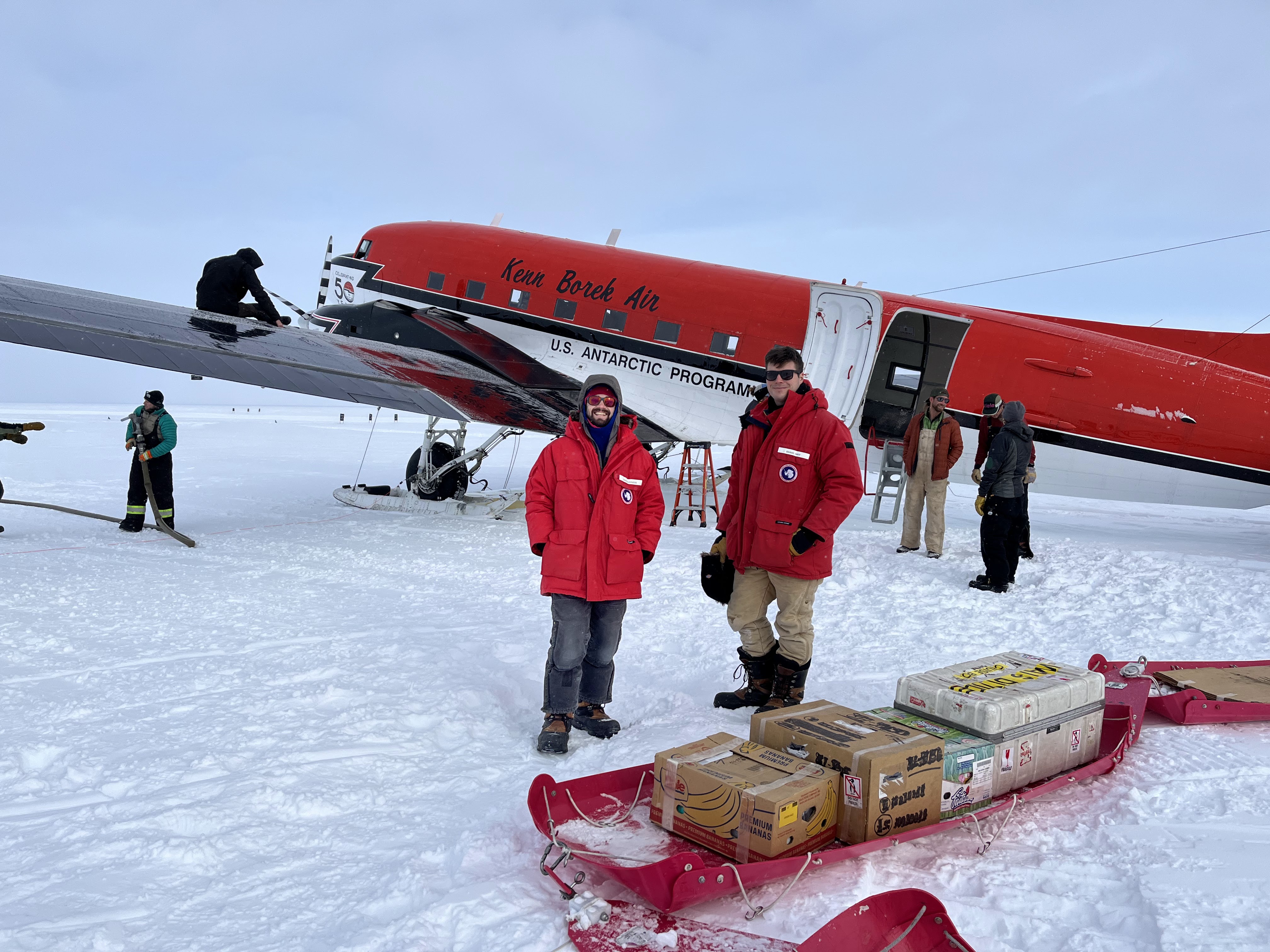
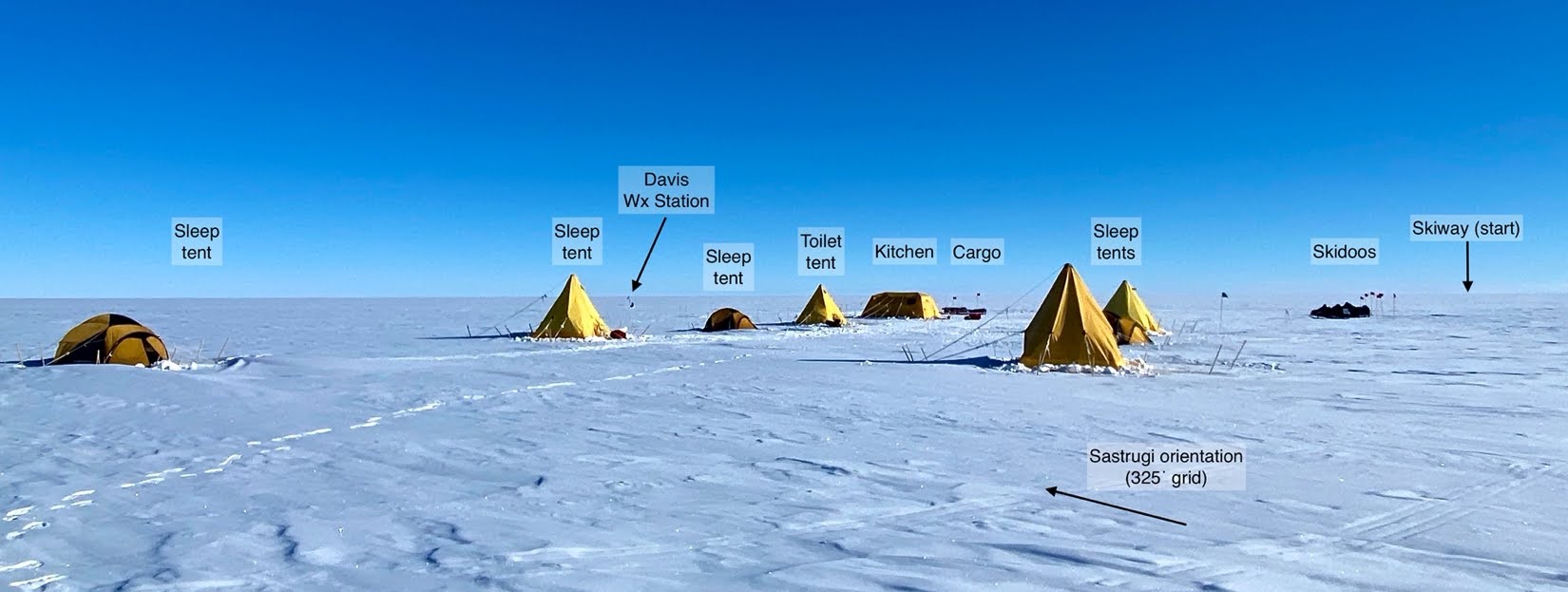
Upon arrival at WAIS Divide, Paul, Danny, and Marianne immediately started the final sorting and preparation of our field equipment, so we were able to fly to TIME1 Camp with our remaining supplies over the next two days, enjoying an aerial view of the vast flat white expanse of upper Thwaites Glacier. In the meantime, the team at TIME1 was firing up our skidoos, preparing the ground-penetrating radar (GPR) to check skidoo routes for crevasses, and assembling scientific gear to start the field work.
Our first big task was recovering data from seven passive seismometers, six GPS systems (Figure 4), and two autonomous phase-sensitive radar (ApRES) systems that were deployed late in 2019 by our TIME colleagues, Jake Walter, TJ Young, Eliza Dawson, and Stephen Veitch, and mountaineers Forrest McCarthy and Julie Baum. These sites had not been visited by humans since that time! Snow accumulation in this area averages about 2 meters per year, so we were expecting lots of quality time with our shovels.
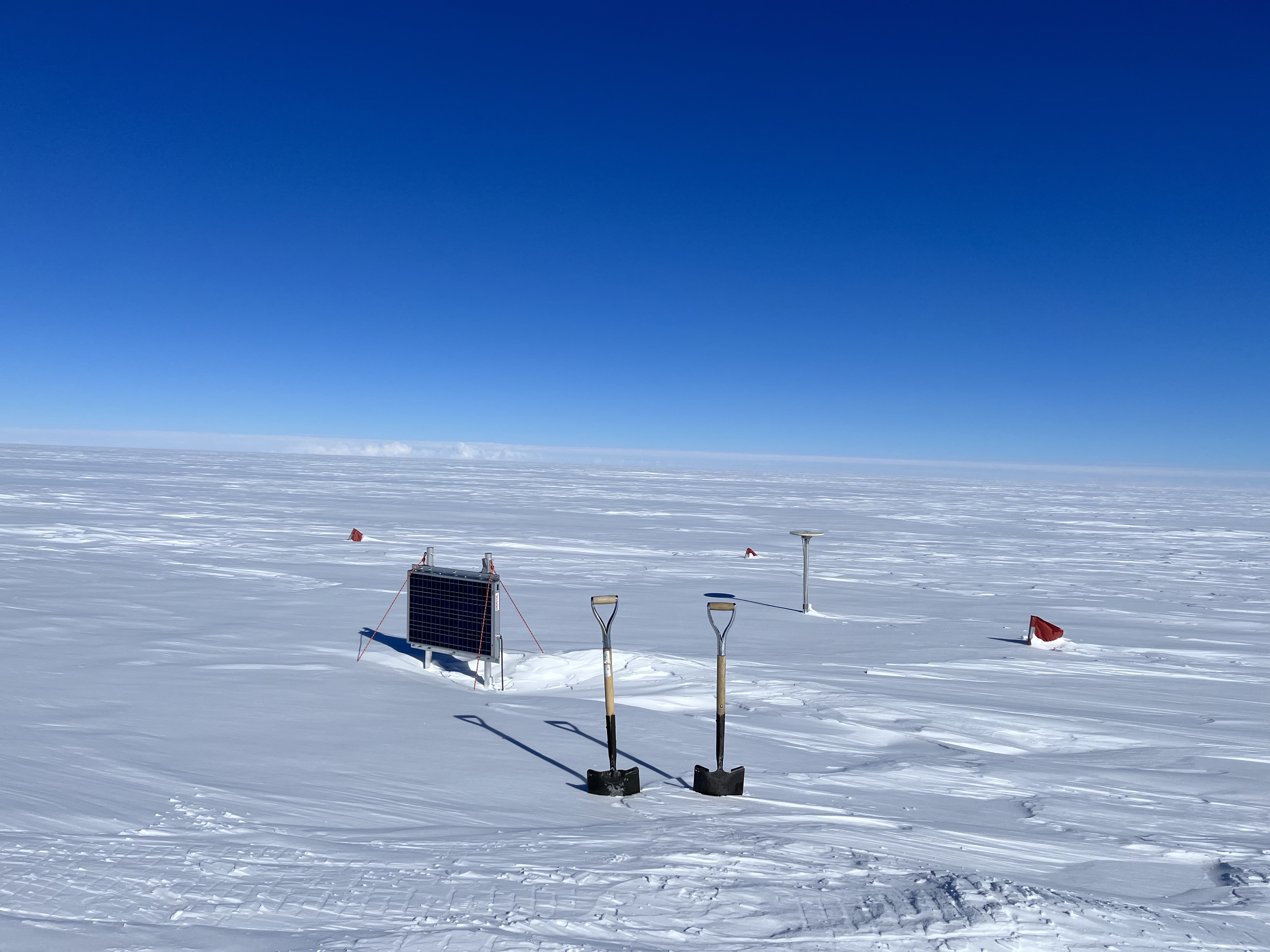
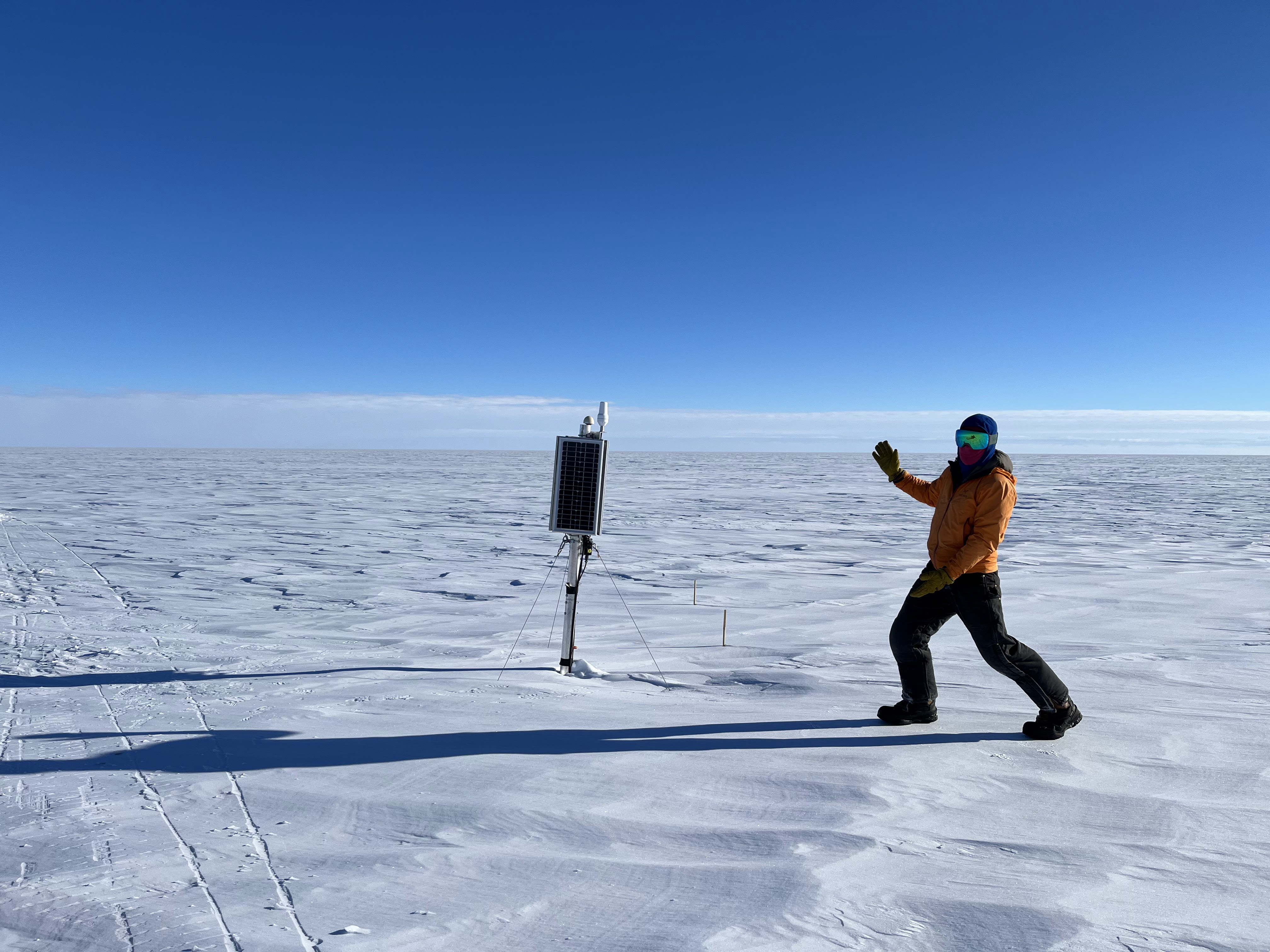
The valiant digging efforts by the team - especially our amazing mountaineers, Mike Roberts and Kirah Solomon - yielded one buried treasure trove of data after the next, as we recovered our instruments one by one (Figure 4). Day after day we continued to have mostly sunny weather with minimal wind, unusual for West Antarctica, so we continued recovering instruments. We dug up two seismic enclosures and a seismic sensor on Christmas Day. Paul also generously treated all of us to Christmas stockings featuring our initials that he handmade in McMurdo (Figure 5). We also participated in the High Frequency (HF) Radio Christmas caroling event from our field work site with Kirah and TJ singing a moving rendition of Silent Night across the flat white wilderness (Figure 5).
The passive seismometers that we deployed are very sensitive instruments that record ground motions with a broad range of frequencies at a high sampling rate (>100 samples per second). These new seismic recordings of 24 months near the eastern shear margin of Thwaites Glacier contain myriad signals that we can correlate to the movements of the ice and the solid Earth beneath the ice. We can observe ice quakes (breaking ice) from calving events, ice sliding over rock, and crevasses opening, tectonic earthquakes near and far (even >1000 km away!), tremor signals from water flowing within the ice, and more! We can also use the seismic recordings to determine the speed that seismic P-waves, S-waves, and surface waves travel through the ice and the rock underneath to get a sense of the material properties of that ice and rock. These information help us better understand the past, present, and future of the shear margin, including its migration.
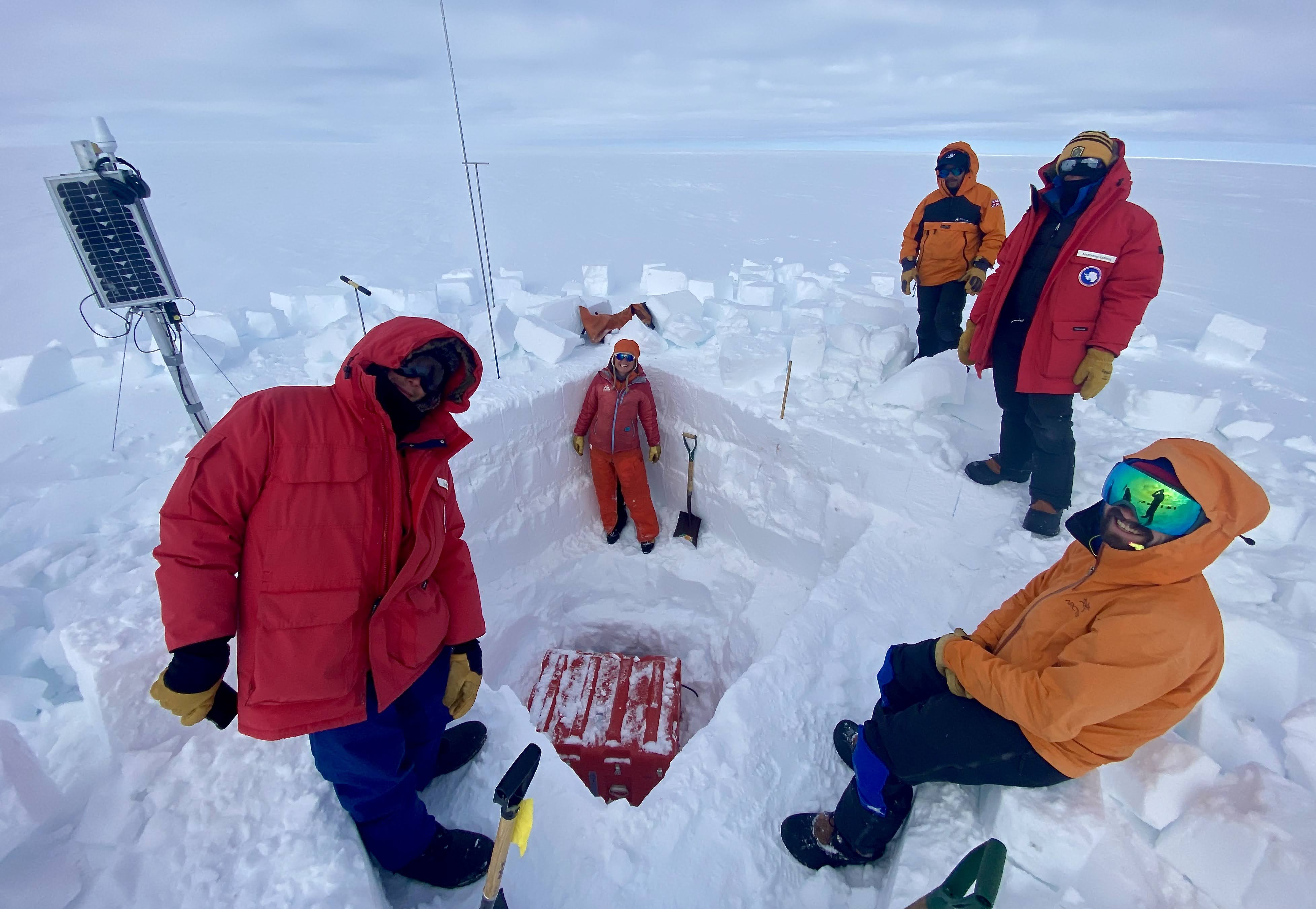
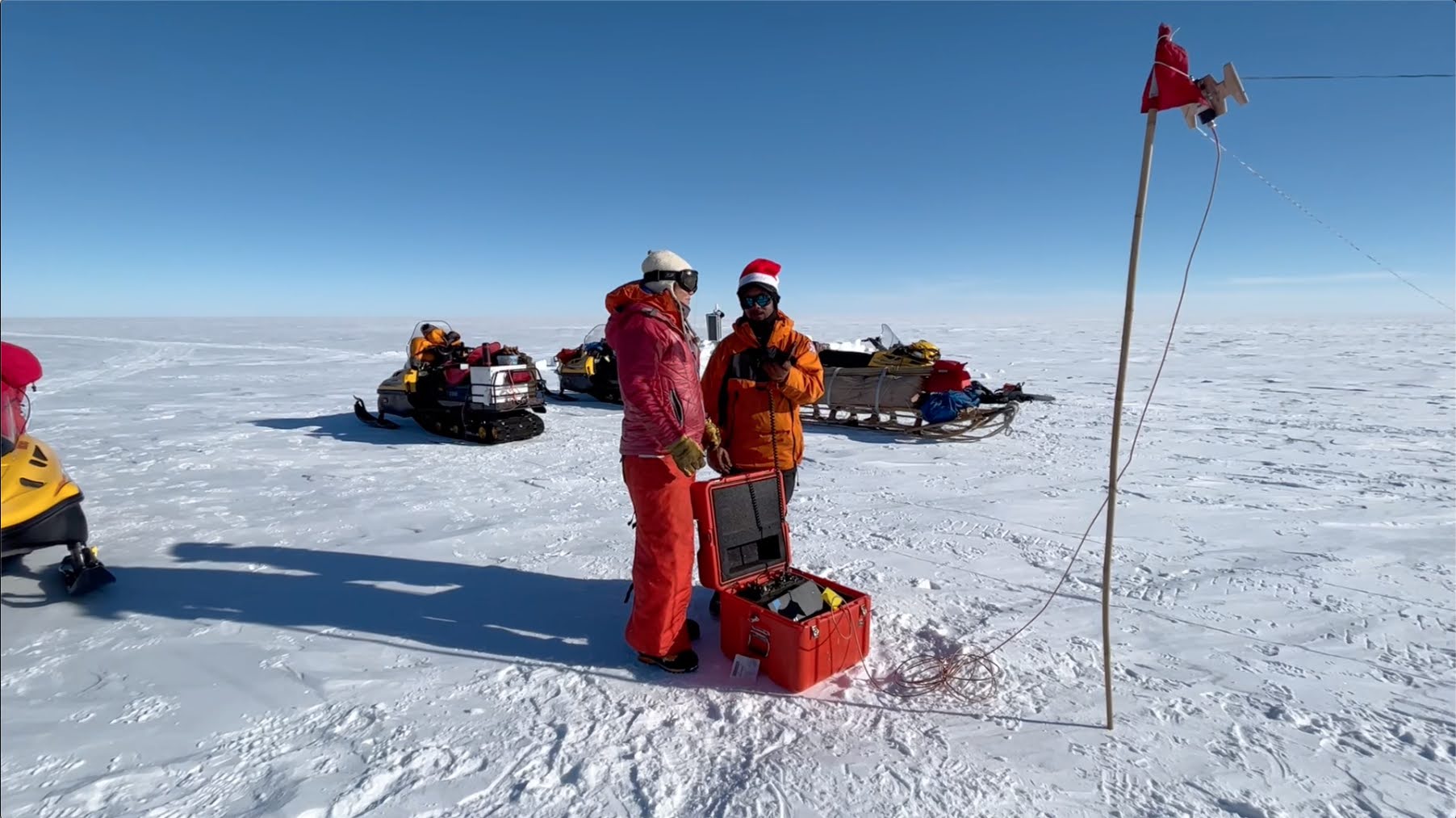
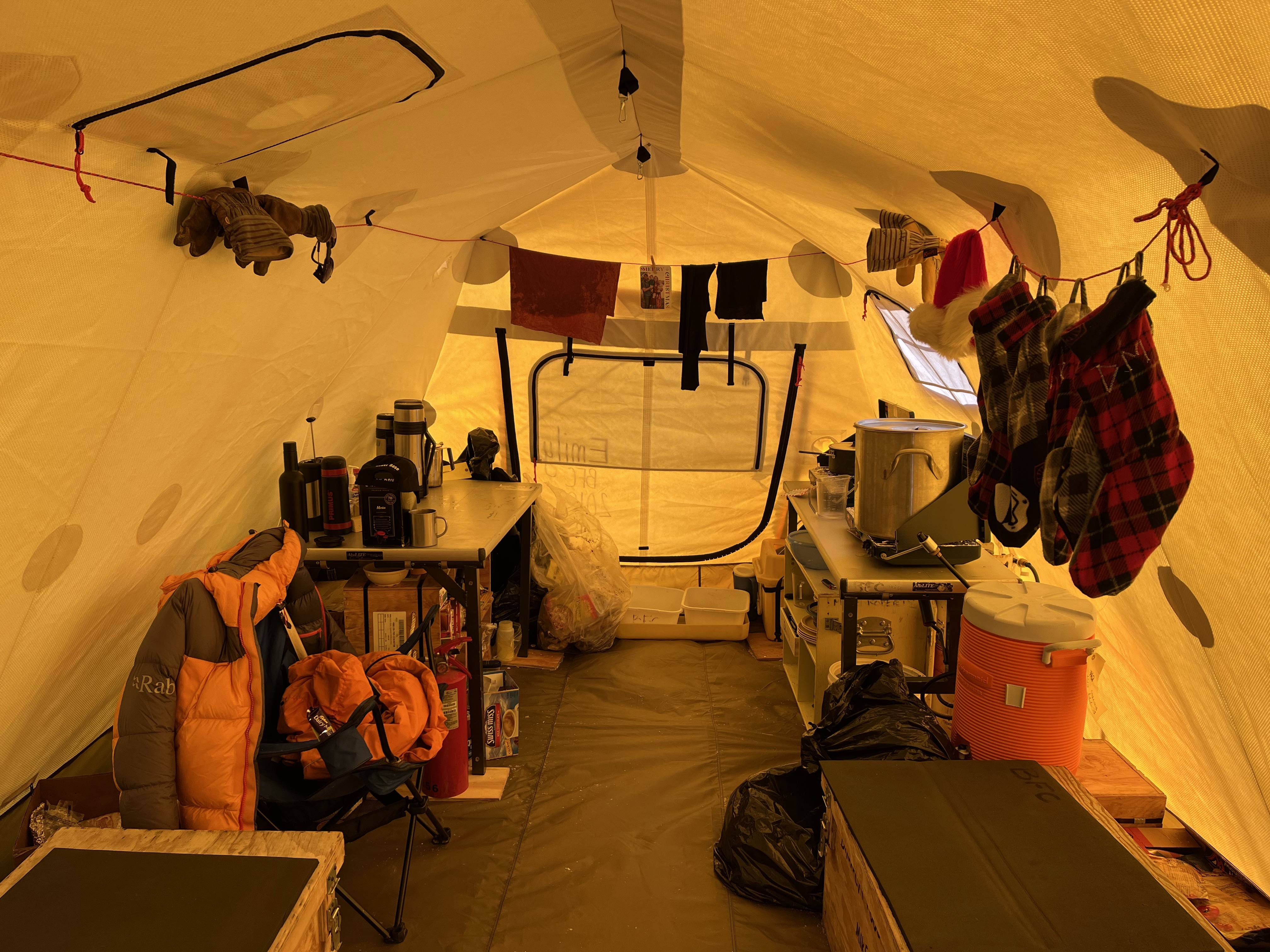
About a week after we arrived at TIME1 camp, we finished recovering the seven seismic data loggers and seismic sensors (Figures 6a and 6b) and moved on to the GPS stations. On New Year's Eve, we woke up at 2am for a long skidoo day trip to our two most distant GPS stations (Figure 7). We arrived back at TIME1 Camp just in time for dinner and an early celebratory New Year’s toast before bed.
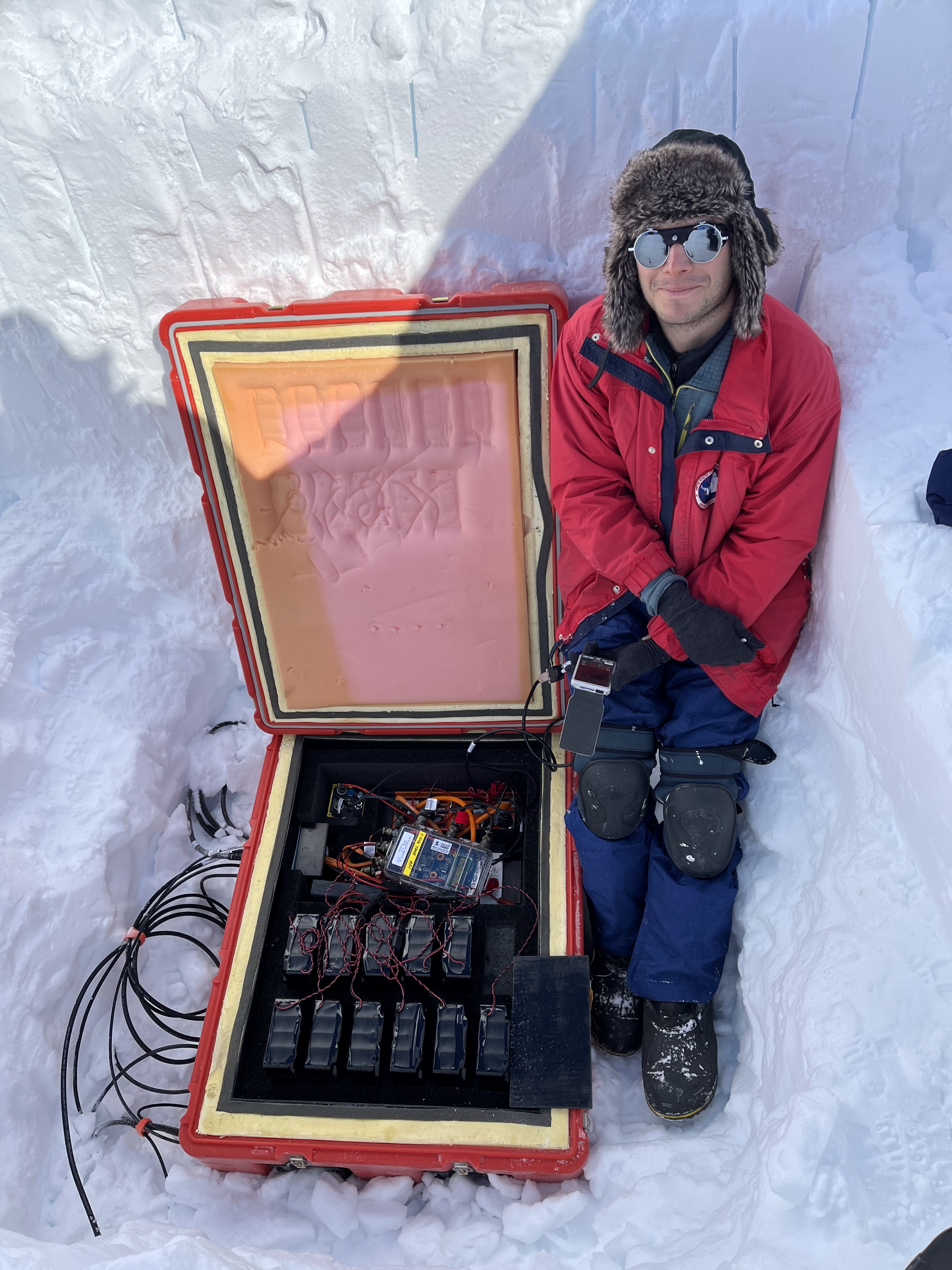
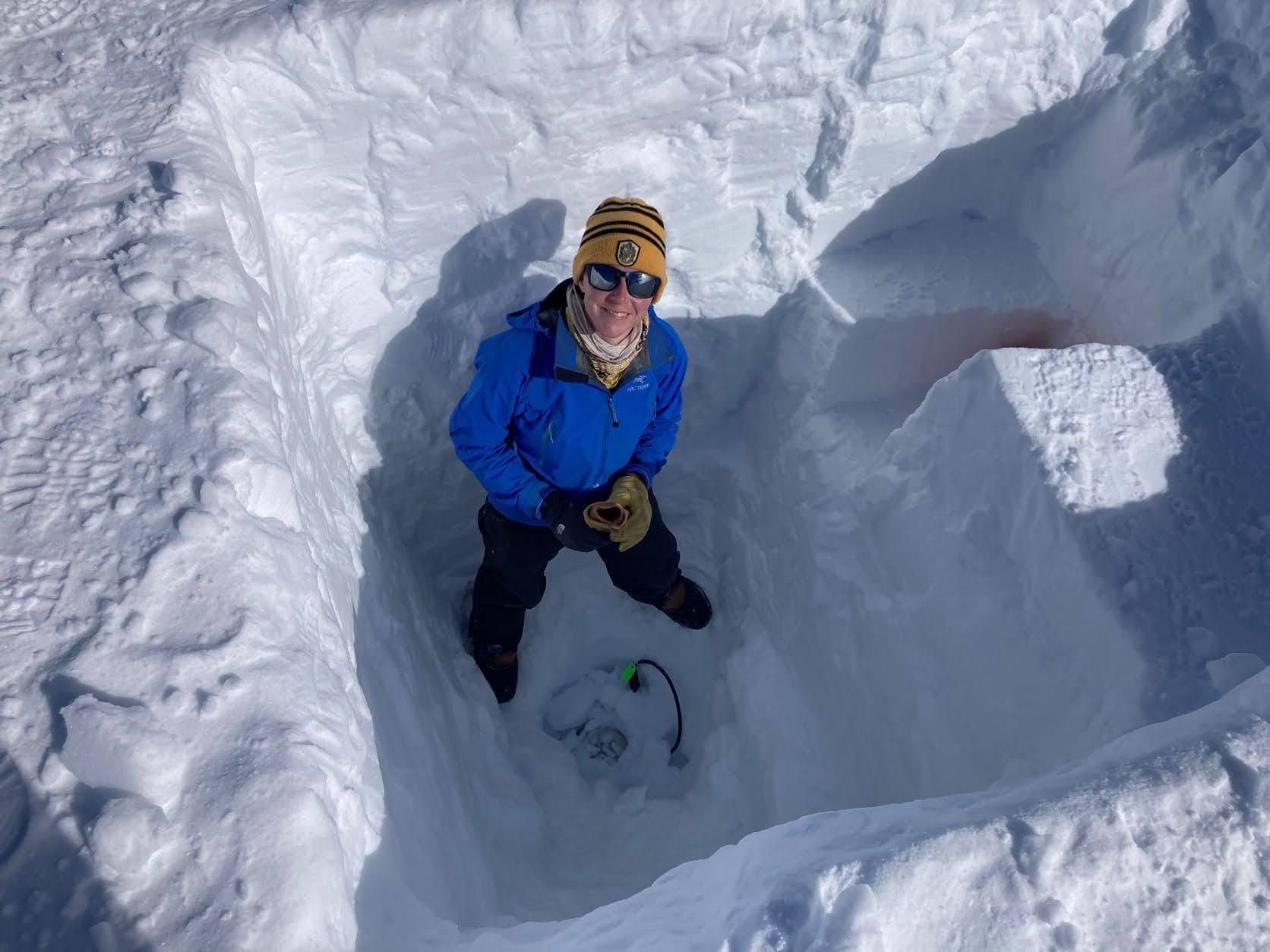
At our study site, the glacier could be flowing anywhere from 0 (i.e. not moving) to over 100 metres per year, depending on which side of the shear margin we were at. With such a wide range in velocities over a small (20-km-wide) distance, the GPS stations and measurements will prove extremely valuable to characterize how the shear margin influences the “slipperiness” of the glacier. It was hard work traveling long hours and digging deep holes for these stations, but the wealth of data that they have recorded is sure to be worth the effort!
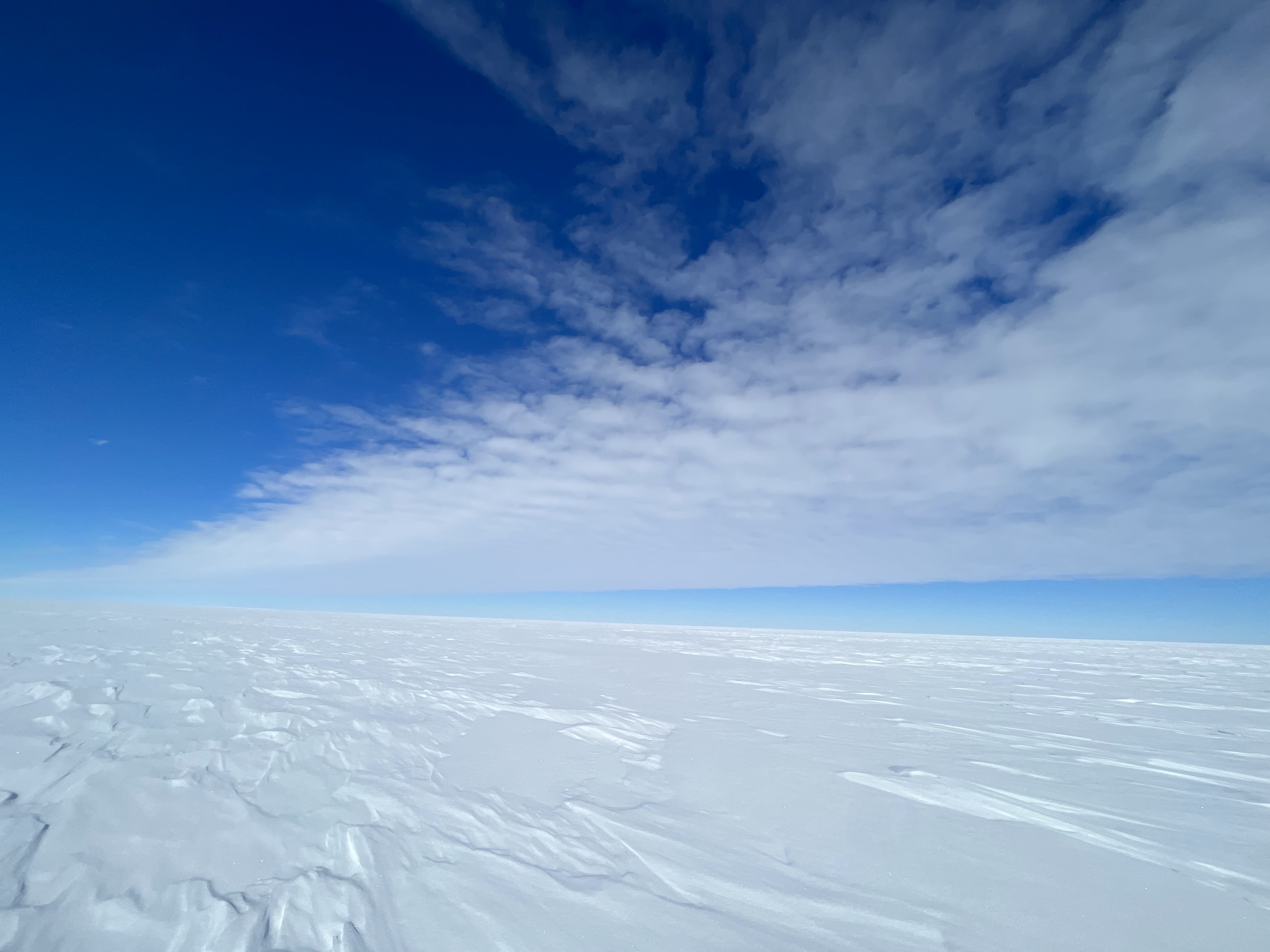
After we had recovered the six GPS and two ApRES radar systems, we spent the final few days sending off retro cargo back to WAIS Divide, packing up our camp, and doing ApRES and bistatic radar surveys (Figure 8). Our radar measurements will reveal hard-won information about the englacial properties of the ice directly beneath us, such as its temperature at various depths and its crystal fabric (the overall arrangement of the ice crystals that form the imaged section of the glacier), and how these observations are affected by the dynamic shearing that occurs at this site.
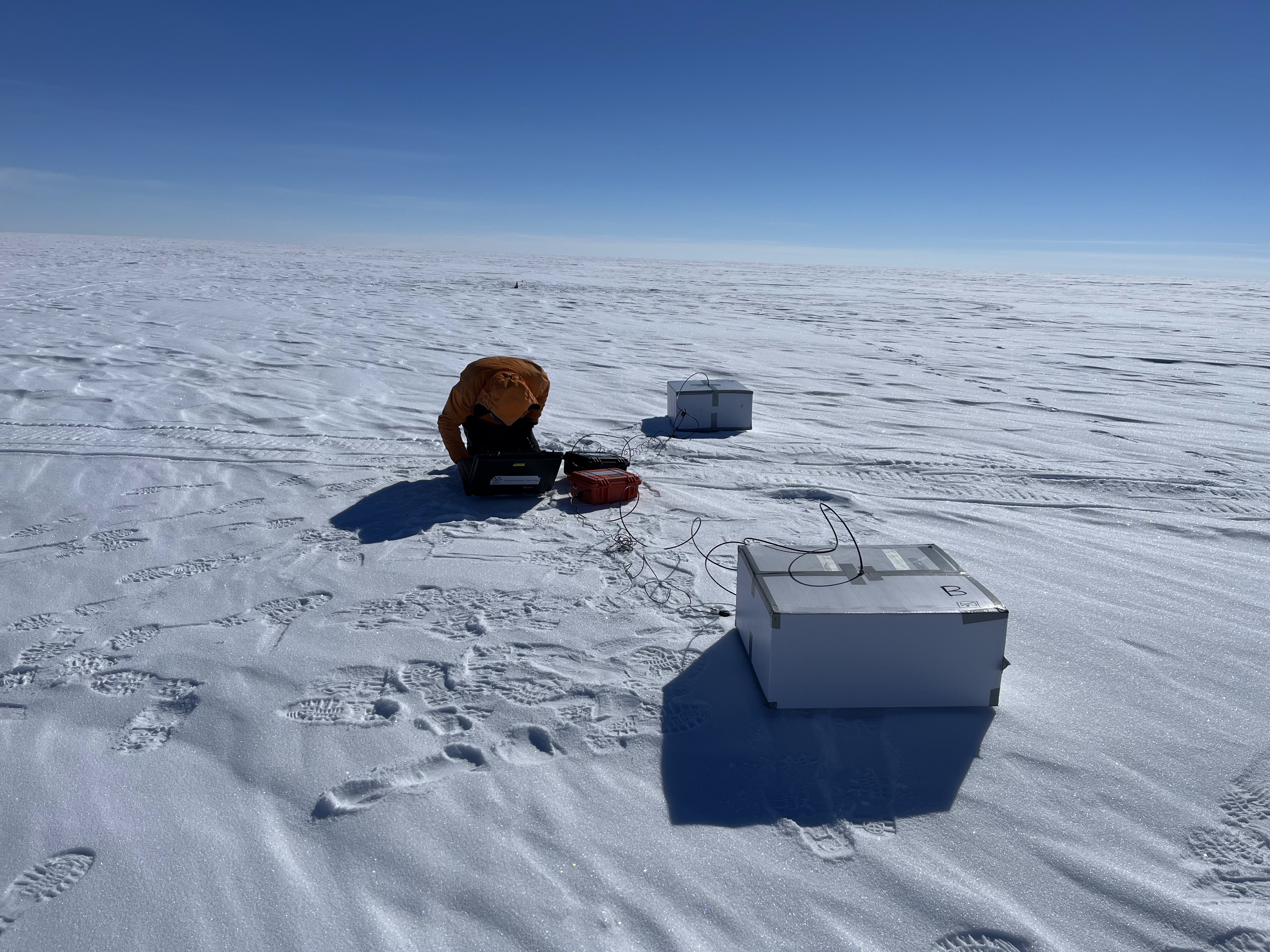
Our team was able to retrieve all of our high priority equipment from the TIME1 site, collect repeat GPS survey measurements, and collect some of our planned radar surveys. We were able to work faster than anticipated due to great weather at T1 (no bad weather days or storms in 14 days!) and better digging conditions than expected. Despite the logistical challenges and shortened field timeline, we were very grateful for our time in the field and ability to accomplish almost all of our planned work. We want to thank all of the field team members for their hard work, positive attitudes, and dedication to completing our mission. We also want to thank the National Science Foundation, U.S. Antarctic Program, the camp staff of WAIS Divide, the wonderful pilots and flight crews of Ken Borek Air, and everyone who provided equipment, logistical, flight, and cargo support throughout our time in Antarctica. Thank you!
